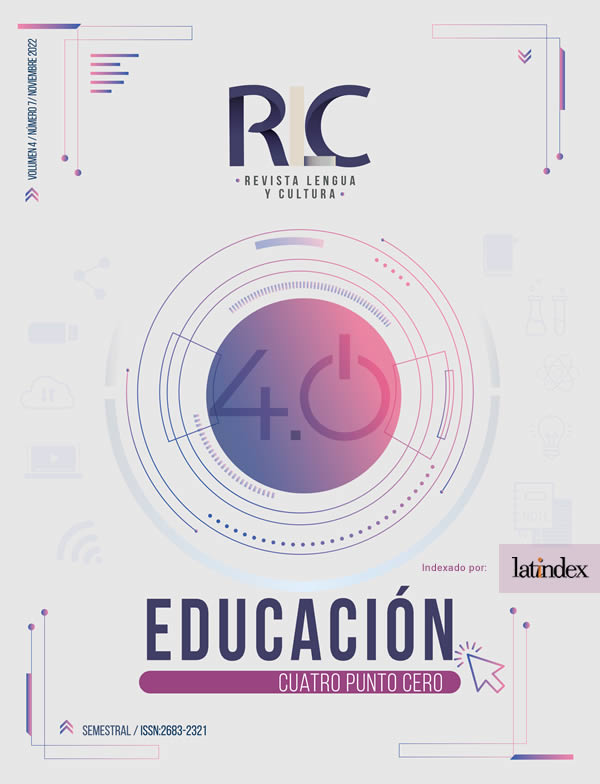Identities in the migrant classroom of Tapachula by Haitian children
Abstract
Borders are social spaces in which social phenomena are presented with very particular characteristics that, seen and analyzed from various disciplines, highlight cultural, linguistic and social aspects and result in different worldviews of a society. In this sense, the transnational migration of Tapachula has influenced the constant and vertiginous transformation of the imaginary and the social representation of the area; and as a result, the growing cultural and social diversity resulting from this phenomenon poses new challenges and questions for this society that are directly reflected in the educational space. From social anthropology, this paper aims to observe the identities that converge (or are represented) in a classroom in which migrant children of Haitian origin participate. Finally, to understand these changes and answer some of the possible questions that may arise about it, this article presents the findings found throughout an ethnographic work with which, through the voices of our participants, we explore the constant construction of identity in migrant classrooms and its relationship with social changes in the region.
Downloads
References
[2] Ayora, M. (2008). La situación sociolingüística del Ceuta: un caso de lenguas en contacto. Tonos Digital, Revista Electrónica de Estudios Filológicos; No 16. Murcia, España. Recuperado de: http://www.tonosdigital.es/ojs/index.php/tonos/article/view/236/178
[3] Beck, U. (1998). ¿Qué es la globalización? Paidós, Barcelona, España.
[4] Broom, L. (1954). The Social Differentiation of Jamaica. American Social Review, vol. 19, no. 2. Pp: 974.
[5] Bustillo, M. (2006). Infancia y Aprendizaje. Journal for the Study of Education and Development. Pp: 72, 73.
[6] Calvo, G. y Menéndez, E. (1985). Ocio y prácticas culturales de los jóvenes. Madrid, España. Pp: 257.
[7] Campos, A., Odgers, O. (2012). Crossing the border: Mobility as a Resource in the Tijuana/San Diego and Tecún Umán/Tapachula Regions. Université de Montréal y El Colegio de la Frontera Norte. Recuperado de: www.researchgate.net/publication/331976768
[8] Casal, J., Masjuan, J. y Planas, J. (1988). Elementos para un análisis sociológico de la transición a la vida adulta. Política y sociedad, no. 1. ISSN: 1130-8001.
[9] Chanona, O. (2011). Negociación e identidad en el evento de compra-venta dentro del ecoturismo en la comunidad maya-lacandona asentuada en Lacanjá Chansayab, Chiapas (Tesis de Doctorado).Universidad Autónoma de Chiapas, México.
[10] Etxabarria, M. (2003). Español y euskera en contacto: resultados lingüísticos. Revista Internacional de Lingüística Iberoamericana. Frankfurt: Vervuet Verlag. II-2(4), 131-145.
[11] Deslauriers, J. y Kérist, M. (1997). Le devis de recherche qualitative. En Poupart, J. Groulx, L. et al (coord) La Recherche Qualitative. Enjeux épistémologiques et méthodologiques. Montrèal, QC, Canadá: Gaëtan Morin éditeur/Chenelière éducation. Pp: 89
[12] Dilla, A. (2013). La migración haitiana en el caribe: una propuesta para la acción. Trabajo infantil y Migración. Recuperado de: http://migracion.iniciativa2025alc.org/la-migracion-haitiana-en-el-caribe-una-propuesta-para-la-accion/
[13] Fong, A. (2019). Exploración de la Identidad en el Aula a través de Actividades Didácticas: Casas de Cultura Japonesa de Tapachula. Universidad Autónoma de Chiapas, Facultad de Lenguas Tuxtla. Tesis de Maestría. Pp: 31-59
[14] Friedman, L. (1994). Is there a Legal culture? Ratio Juris Volume 7, Issue 2 July 1994. Doi: https://doi.org/10.1111/j.1467-9337.1994.tb00172.x
[15] Holm, J. (1988). Pidgins and Creoles. Volume I: Theory and Structure. Nueva York. University of Cambridge. P: 64.
[16] Lalli, M. (En prensa). Urban-related identity: Theory, measurement, and empirical findings. En Valera, S. (1994). El concepto de identidad social urbana: una aproximación entre la Psicología social y la psicología ambiental. Universidad de Barcelona. Barcelona, España. P:11
[17] Ortiz, F. (1940). Los factores humanos de la cubanidad. Conferencia a los estudiantes de la fraternidad iota Eta en la Universidad de la Habana, el 28 de noviembre de 1939. Bimestre Cubana XLV (2).
[18] Prieto, M. (1990). La práctica pedagógica en el aula: un análisis crítico. Revista Educación y Pedagogía No. 4. 1(4), 73–92. Recuperado a partir de https://revistas.udea.edu.co/index.php/revistaeyp/article/view/5624
[19] Proshansky, H.M., Fabian & Kaminoff. (1983). Place-identity: physical world socialization of the self. En Valera, S. (1994). El concepto de identidad social urbana: una aproximación entre la Psicología social y la psicología ambiental. Universidad de Barcelona. Barcelona, España. P:10
[20] Marc, E. (2004). La construction identitaire de l’individu. En Halpern, C. y Ruano-Borbalan, J. (coord) Identité(s): L’individu, le groupe, la societé. Auxerre, France: Sciences Humaines Éditions.
[21] Seeger, C. (1952). Music in Society: Some New-World Evidence of their Relationship. Proceedings of the Conference on Latin American Fine Arts, 84-97. Austin: University of Texas Press. Berkeley: University of California Press. Pp: 184.
[22] Signorelli, A. (1985). Identitá etnica e cultura de masa del laboratorio migranti. En Angelo Di Carlo (Ed) I luoghi dell’identitá, Milan: Franco Angeli.
[23] Sun, L. (2013). Culture Teaching in Foreign Language Teaching. Theory and Practice in Language Studies 3 (2): 371–75.
[24] Más de 7000 personas viajan en la Caravana Migrante, estima la ONU(2018). Recuperado de: https://www.forbes.com.mx/mas-de-7000-personas-viajan-en-la-caravana-migrante-estima-la-onu/
Copyright (c) 2022 Alberto Jorge Fong Ochoa, Eyder Gabriel Sima Lozano

This work is licensed under a Creative Commons Attribution-NonCommercial-NoDerivatives 4.0 International License.













